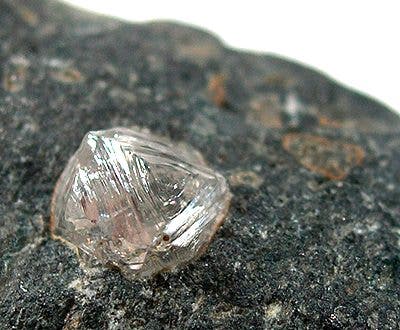Researchers have discovered what appears to be a cache of diamonds hidden in the Earth’s mantle. This suggests that, at a geological scale, diamond might not be the exotic mineral we once thought it to be — they may be quite common, though not easily accessible.

Earthquakes and diamonds
The world’s deepest borehole goes down 12.262 kilometers (40,230 ft). How is it then that we know so much about the depths of the Earth, which boasts an average radius of over 6,300 km? As is so often the case, scientists have gathered a trove of data which enabled them to infer many things beyond sight — in this case, of the Earth’s interior properties.
Most of this data comes from seismic waves — which are essentially subsurface acoustic waves. Every time an earthquake (or a large enough explosion) takes place, it sends out seismic waves which can be picked up by seismic stations across the world. According to the U.S. Geological Survey’s National Earthquake Information Center, there are over 3000 seismic stations currently operating across the world.
Seismometers record the ground movement on a seismograph. Based on the wiggles of the seismograph, certain pieces of information can be drawn, particularly about the nature of the ground the wave has passed through. Of course, this is a great simplification and the seismogram analysis process is much more intricate, often involving a great deal of complexity and mathematical algorithms. You can pick up simpler things, like where the earthquake epicenter was and how much energy the earthquake had, or use the data for complex things — like constructing an image of what the Earth’s interior might look like.

For decades, agencies such as the USGS, universities, and research groups have been keeping track of this seismic activity. Among many other things, scientists have noticed an intriguing anomaly: the velocity of some seismic waves in some areas could not be explained with our existing knowledge of the Earth’s structure.
In this particular case, an MIT team aimed to identify the composition of so-called cratonic roots that might explain the spikes in seismic speeds. They concluded that the reason for this anomaly is diamonds.
“This shows that diamond is not perhaps this exotic mineral, but on the [geological] scale of things, it’s relatively common,” says Ulrich Faul, a research scientist in MIT’s Department of Earth, Atmospheric, and Planetary Sciences. “We can’t get at them, but still, there is much more diamond there than we have ever thought before.”
Cratons

The Earth’s crust made out of mobile, dynamic tectonic plates. We don’t see that because the movement is essentially unnoticeable at a human scale, but at a geological scale, tectonic plates move about quite a lot. Most tectonic plates’ movement is on the scale of a few centimeters per year.
Cratons are very old and stable parts of the Earth’s tectonic crust. Most cratons on Earth have survived cycles of merging and rifting of continents, and are typically located at the interior of tectonic plates. They have a thick crust and deep lithospheric “roots” that can extend several hundred kilometers into the Earth’s mantle.
Cratons are also colder and less dense than the surrounding mantle, which means that they would yield slightly faster seismic waves — but this alone can’t entirely account for the speed anomaly. So there must be something else.
“The velocities that are measured are faster than what we think we can reproduce with reasonable assumptions about what is there,” Faul says. “Then we have to say, ‘There is a problem.’ That’s how this project started.”
In order to solve this conundrum, Faul and colleagues started assembling virtual rocks which could theoretically exist at the temperature and pressure conditions in those parts of the mantle. They then calculated how fast seismic waves would pass through these structures, to see if this would fit the observed seismic data.
They found that the data would be best explained by a craton rock composition of 1 to 2 percent diamond. This would translate to about quadrillion tons of diamond.
In a way, this makes a lot of sense. We know that diamonds are forged deep in the bowels of the Earth, in high-pressure, high-temperature environments. The only reason why we’re able to find diamonds is that they’re brought closer to the surface by volcanic eruptions which act like “pipes” — bringing them to the surface, where we at least have a chance of finding them.
Of course, it’s important to note that Faul and colleagues found no direct evidence that the craton roots do contain diamonds, it’s just that this explanation seems to fit best. But this line of thinking has brought us so far, so at least for now, it seems convincing enough.
“It’s circumstantial evidence, but we’ve pieced it all together,” Faul says. “We went through all the different possibilities, from every angle, and this is the only one that’s left as a reasonable explanation.”
Journal Reference: Joshua M. Garber et al. Multidisciplinary “Constraints on the Abundance of Diamond and Eclogite in the Cratonic Lithosphere”, Geochemistry, Geophysics, Geosystems (2018). DOI: 10.1029/2018GC007534.
Was this helpful?




